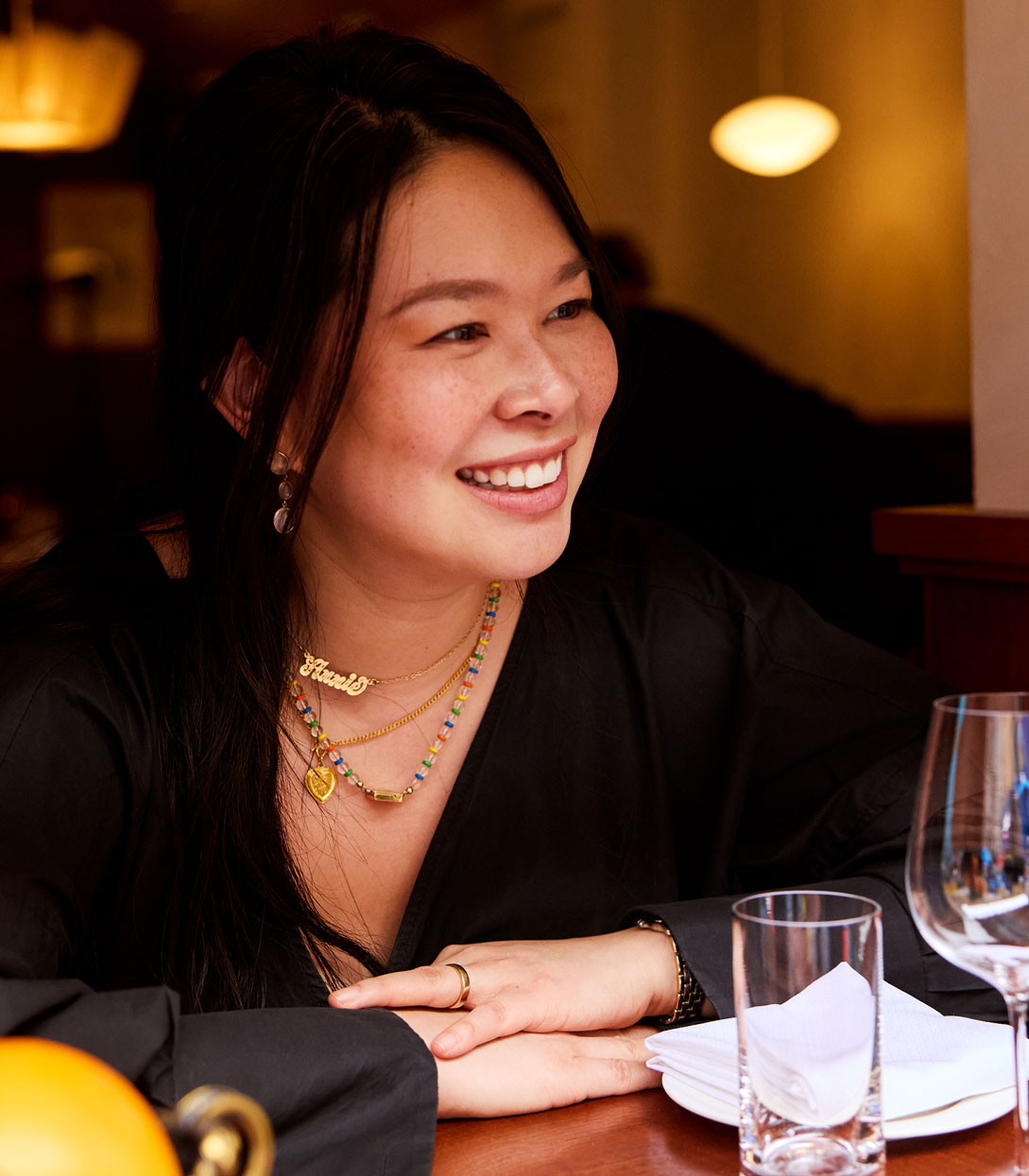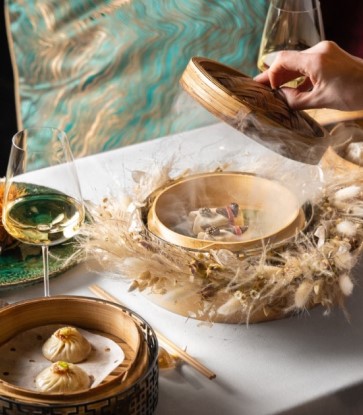
Fast forward to the Qing Dynasty—smoking was no longer seen as just a preservation technique, but also a way of cooking. The smoked egg is featured in the great gastronomic literature of the era, Recipes From The Garden Of Contentment, and the book explains the technique as such: “Cook the egg with the desired ingredients and allow it to dry slowly in the smoke. Slice it and put it on a plate to serve.”
In modern times, smoking is so much more than just keeping meat edible—it adds a unique fragrance to food for our enjoyment.

Finding a Unique Blend of Burning Material
In smoking, the burning materials play the most vital part. In Chinese cuisine, they usually consist of tea leaves, sugar and rice—tea and rice for their fragrance and sugar for the caramelizing effect on the food. In addition, Sze adds flour and cornstarch. (Right photo by Ada Au.)
“Sugar sticks to the wok tightly when it melts. Having flour and cornstarch there means the melted sugar would stick onto them instead, which makes cleaning easier,” he says.
Sze thinks any type of tea works in smoking. His personal favorites are longjing and pu’er. “Longjing is lighter in [both] flavor and color, which is more suitable for seafood. Pu’er is an ideal option for meat—it tastes stronger. After smoking, the food turns into a deeper color, too.”
There are chefs who prefer other black teas, rose tea and jasmine tea. Apart from tea, wood is frequently chosen as well. Lychee wood, applewood and camphorwood are all popular among Chinese cooks. They give out a more intense smell than tea. The biggest challenges are finding high-quality wood and a longer smoking time needed compared to using tea. Sze works with wood in his kitchen, but he also puts tea and dry leaves into the mix to enrich the fragrance of the smoke.

Two Types of Smoking
There are two ways of smoking food in Chinese cuisine. The raw smoking technique applies to dishes such as camphorwood-smoked duck. After blanching, the duck is brushed with malt sugar water and then air-dried. This is followed by 45 minutes of roasting in a vertical, cylindrical roaster with camphorwood shavings, pu’er tea, dried camphor leaves, sugar and flour. Sze goes with the ratio of two parts camphor wood and one part pu’er.
“Camphorwood-roasted duck is distinguished by the camphorwood aroma. If we use equal amounts of camphorwood and pu’er, the two burning agents would compete with one another and the taste of camphor wood would be lost,” Sze pointed out. It is a flawless pairing, as the scent of camphorwood complements the duck perfectly.
More common is the mature smoking method. In short, it is to smoke cooked food with burning materials, essentially a final push to elevate the appearance and flavor of the dish. Take the aforementioned smoked egg as an example, in which Sze combines longjing tea, sugar, puffed rice, flour and cornstarch inside a wok. On top of the ingredients, he adds a steaming rack and lays some spring onion and cooked eggs above it. The eggs are then smoked in the covered wok for a few minutes before it is served.

Timing and Temperature Are Key
Controlling time and temperature is the key to success. Smoking must start on medium heat, and when white smoke becomes visible, immediately turn the heat to low. When the smoke becomes yellow, uncover the wok to release the smoke, then cover it again and turn off the heat.
“High heat, smoking [too long], generating too much yellow smoke and letting the yellow smoke stay for too long are all conditions that expose the dish to more smoke than necessary and make it bitter,” Sze says, adding that the ingredients are best held on a steaming rack or a stainless steel plate. Direct contact to the smoking agent would also give them a bitter taste.
Many people believe smoking is only appropriate for poultry and seafood, but Sze says that every ingredient can benefit from a dose of aromatic smoke.
“Some feel smoked dishes have a stronger taste. In fact, if it is executed in the right way, smoking can bring great character to a dish.”
Portrait of Sze Chiu-kwan courtesy of Dong Lai Shun.





















